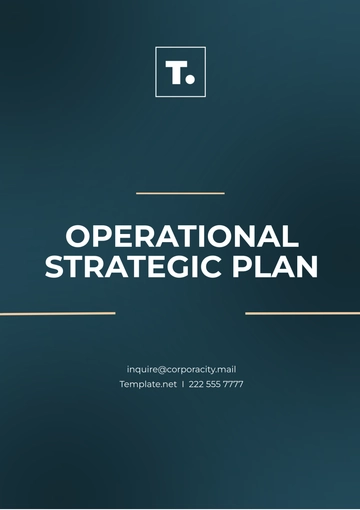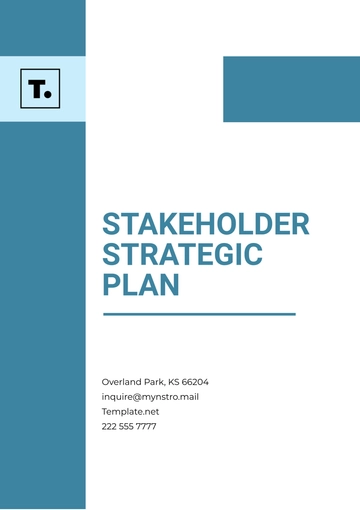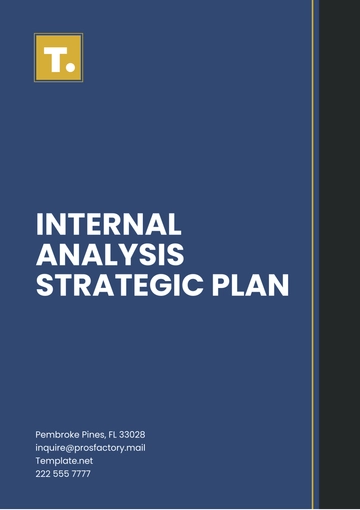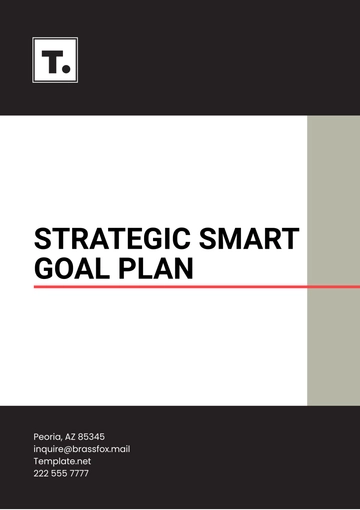Free Simple Presentation Sales Strategic Plan

Prepared By: [Your Name]
Date: January 5, 2060
I. Executive Summary
This Simple Presentation Sales Strategic Plan presents a comprehensive roadmap for driving substantial sales growth from 2050 onwards. We aim to enhance our market presence through targeted strategies, innovative marketing, and a customer-centric approach. This plan articulates clear sales goals, identifies key market segments, and outlines actionable strategies to maximize revenue and customer loyalty.
II. Sales Goals
Achieve a 25% Increase in Annual Sales by 2051: Implement focused sales initiatives and performance tracking to ensure consistent growth.
Expand Market Share in Target Demographics by 15% by 2052: Utilize market research to identify and penetrate high-potential segments, ensuring a broader reach.
Establish a Customer Retention Rate of 90% by 2053: Develop loyalty programs and enhance customer service to build lasting relationships with our clientele.
III. Target Market Analysis
Primary Demographic: Urban professionals aged 30-45, characterized by a strong affinity for technology and convenience.
Market Segments:
Tech-Savvy Consumers: Individuals seeking innovative products that enhance their lifestyles and work efficiency.
Environmentally Conscious Buyers: Customers prioritize sustainability and ethical sourcing in their purchasing decisions.
Competitive Analysis: Regularly assess competitor offerings and market positioning to adapt our strategies and maintain a competitive edge.
IV. Sales Strategies and Tactics
Direct Sales Initiatives: Strengthen customer relationships through personalized outreach, networking, and client engagement events. Empower the sales team with tools and training to enhance effectiveness.
Digital Marketing Campaigns: Leverage advanced analytics and social media platforms to create targeted content, driving awareness and generating qualified leads. Employ SEO and email marketing to nurture prospects and convert them into customers.
Strategic Partnerships: Identify and collaborate with complementary brands to co-promote products, expanding our reach and offering bundled solutions that provide added value to customers.
V. Performance Metrics
Monthly Sales Growth Tracking: Regularly analyze sales data to assess progress toward goals, enabling timely adjustments to strategies.
Customer Acquisition Costs (CAC) Analysis: Monitor CAC to ensure marketing investments yield profitable customer relationships and adjust campaigns accordingly.
Conversion Rates from Marketing Campaigns: Measure the effectiveness of various marketing channels to optimize resource allocation and improve overall conversion rates.
VI. Action Plan
Year | Action | Responsibility | Expected Outcome |
|---|---|---|---|
2050 | Launch a revamped sales training program focused on customer engagement skills | Sales Manager | Improved sales team performance and customer interactions |
2051 | Initiate a targeted marketing campaign highlighting product innovation and sustainability | Marketing Department | Increased brand awareness and lead generation |
2052 | Conduct a thorough review of sales strategies and adapt based on market feedback | Executive Team | Enhanced agility in responding to market changes |
2053 | Implement a customer feedback loop to continuously improve product offerings and services | Customer Service Team | Higher customer satisfaction and loyalty |
VII. Budget Considerations
Marketing Budget Allocation: Dedicate 20% of the annual budget to innovative marketing initiatives, ensuring campaigns are well-funded and impactful.
Sales Team Incentives: Establish a performance-based incentive structure to motivate the sales team and align their goals with company objectives.
Cost Monitoring: Regularly review and adjust budgets based on performance metrics and market conditions, ensuring financial resources are used efficiently and effectively.
- 100% Customizable, free editor
- Access 1 Million+ Templates, photo’s & graphics
- Download or share as a template
- Click and replace photos, graphics, text, backgrounds
- Resize, crop, AI write & more
- Access advanced editor
Present your sales strategy with ease using Template.net’s Simple Presentation Sales Strategic Plan Template. Customizable and editable in our Ai Editor Tool, this template offers a clean, straightforward format for organizing and presenting your sales plan. It’s perfect for quick presentations or in-depth strategy sessions, giving you the flexibility to adjust content as needed.





























